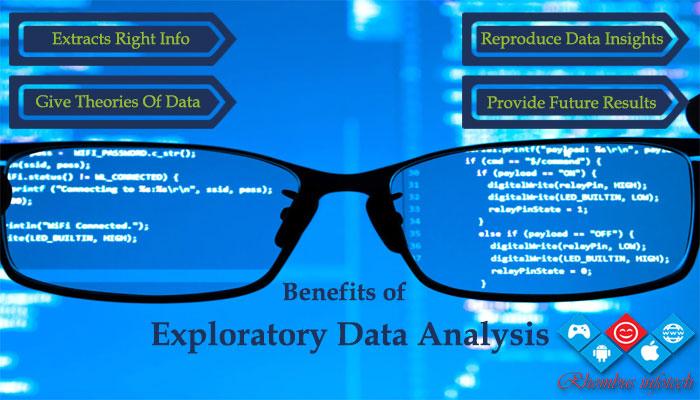“This is the topic in which we will discuss about Data Science Exploratory Data Analysis (EDA) & it’s Benefits”
When we talk about the analysis process of complex data sets especially those have that have high dimensionality, a good data scientist’s or analysts first step is usually to play with data to understand and take out some useful insights.
Exploratory Data Analysis (EDA):
EDA is one of the most important processes at initial stage of data analysis. It is an analytical approach to analyze collection of diverse datasets to summarize their main characteristics by using visual methods which helps to describe what data is showcasing before applying it to modelling task. EDA involves looking at data from many different angles.
Data professionals generally use various visual tools to carry out exploratory data analysis. For example, testing an intuitive hypothesis and to check out what similarities and differences are present in the datasets, it is an excellent effort to use scatter plot graph that can show analysts whether there is a major difference or not between two or more datasets which is not an easy task for human brain to analyze. Block and line graphs are some other examples of exploratory data analysis (EDA) to accelerate the analytical task of data to figure out different sources of data generation, how it can be well used and what better conclusions can be drawn from it.
Advantages of EDA across different markets:
Every business organization today, generates huge amount of data each day and relies on it for analysis. Before taking any data oriented decisions and assumptions, it is necessary to understand it first. If you don’t have the right knowledge how to handle this crucial data, it’s obvious there is someone else who has high expectations and capable to use this data. EDA is the most important steps on which data driven organizations must focus on to utilize its energy and resources.
- Exploratory data analysis enable data analysts and scientists help to bring out the right information at right time to show it company stakeholders.
- Having hands on practical knowledge of exploratory data analysis tools helps data analysts and scientists to produce reproducible insights and understanding of data.
- Exploratory data analysis is a term which involves the use of basic statistics (mean, median, standard deviation etc) to obtain the results of your datasets that helpful for quickly look at data for trends, outliners and patterns. Hence, the eventual objective of EDA is to get theories of data that can test in the modelling further.
- Exploratory data analysis is a valuable task in data science projects as it allows getting closer look to the certainty of future results i.e. proper validation, correctly interpreted and applicable for business contexts. It also helps data science experts to find out insights that were not evident or worth investing for stakeholders which can be very informative related to a particular business.
- Exploratory data analysis is helpful to perform in order to define and refine the selection of featured variables used in machine learning, i.e. it benefits the data experts to get a firm feature sets need for supervised and unsupervised machine learning.
- It allows data scientists to verify existing corners of actual relationships of data, thus formulating and validating techniques of analysis.
- It authorizes to find out unexpected structure in the data which must be taken into consideration by suggesting changes in the planned strategy of analysis.
Conclusion:
Exploratory data analysis is most imperative key competencies of any data science start up project which can help a lot to dig into a new data sets and able to improve your product based on the results. EDA is the best way to gain knowledge of tools that allows easy implementation of powerful machine algorithms also.

